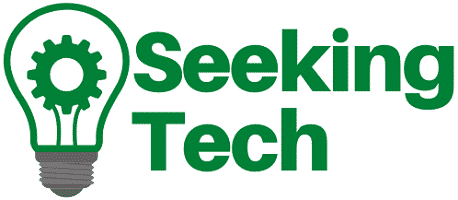The new iPhone 13, iPhone 13 mini, iPhone 13 Pro and iPhone 13 Pro Max all support Qi wireless charging at up to 7.5 W as well as MagSafe wireless charging at up to 15W.
If you are experiencing issues with trying to wirelessly recharge your iPhone 13, then you can check out this guide at Seeking Tech.
1. First off, you need to make sure that your smartphone is compatible with your Qi or MagSafe charger.
As we stated previously, all models of the iPhone 13 can be charged at up to 7.5 W using Qi as well as up to 15W using MagSafe.
2. You should also make sure that the wireless charger is properly plugged into a power source.
If you believe that there is something wrong with the power source, then you can try using a different USB port or power outlet.
3. You can also try to switch to a completely new wireless charger.
4. If your iPhone 13 is dirty, then it may not recharge properly.
You can learn more about cleaning all models of the latest iPhone with this tutorial.
5. It is also important to note that your iPhone 13 model won’t recharge wirelessly if it is connected to a Mac, PC or USB power adapter via a USB cable. Instead, the phone will be recharging over the wired USB connection.
In this case, simply unplug your phone from the USB cable to see if doing so will help solve your wireless recharging issues.
6. Make sure that there isn’t any object in between your iPhone 13 and your wireless charger. These obstructions may reduce the charging performance in addition to potentially damaging magnetic strips and RFID chips.
If your phone case is holding additional objects such as credit cards, passports and security badges, then Apple recommends removing them if you are recharging your phone wirelessly.
7. If you have a case or cover installed on your iPhone 13, iPhone 13 mini, iPhone 13 Pro or iPhone 13 Pro Max, then it may be too thick for the wireless charging to work.
Therefore, you may want to remove the case or cover from your phone and then try to recharge it wirelessly again.
8. You should also make sure that you are following the instructions correctly for your Qi or MagSafe wireless charger.
9. Keep in mind that, if your phone vibrates, then it may be knocked out of position on the wireless charger.
To stop this from happening, we recommend using the Do Not Disturb mode. To get to this mode, you need to do the following:
On your iPhone 13, open the Control Center.
Tap Focus.
Tap Do Not Disturb.
10. In order to prevent your iPhone 13, iPhone 13 mini, iPhone 13 Pro or iPhone 13 Pro Max from overheating, Apple has set up a restriction that will stop your phone from recharging beyond 80% if it gets too hot.
To charge beyond the 80% limit, you can try moving both the device and wireless charger into a cooler environment.
To find out more about how to prevent and stop your iPhone 13 from overheating, you can check out this guide.
11. Apple may also stop your battery from recharging beyond 80% if you are using Optimized Battery Charging. This feature, which is enabled by default, is designed to optimize the lifespan of the iPhone 13’s internal battery by using machine learning. For the uninformed, rechargeable batteries uses their effectiveness the more times they are recharged.
Under certain circumstances, however, Optimized Battery Charging may prevent the battery from recharging beyond 80%.
To disable this feature, you need to take the following steps:
Go to Settings from the Home Screen.
Tap Battery.
Tap Battery Health.
You should see the Optimized Battery Charging setting. Make sure it is disabled before you try to wireless recharge your iPhone 13 again.
